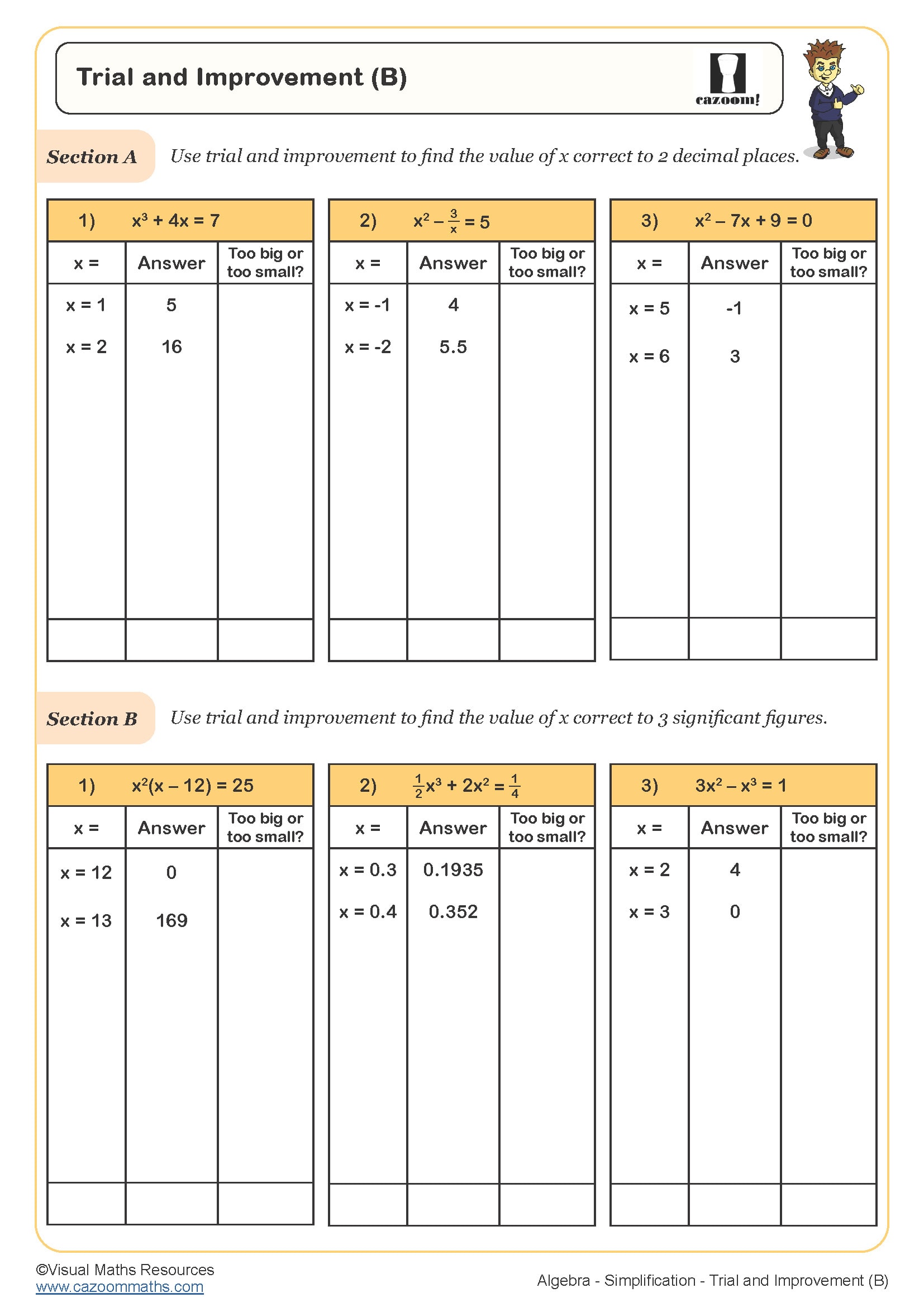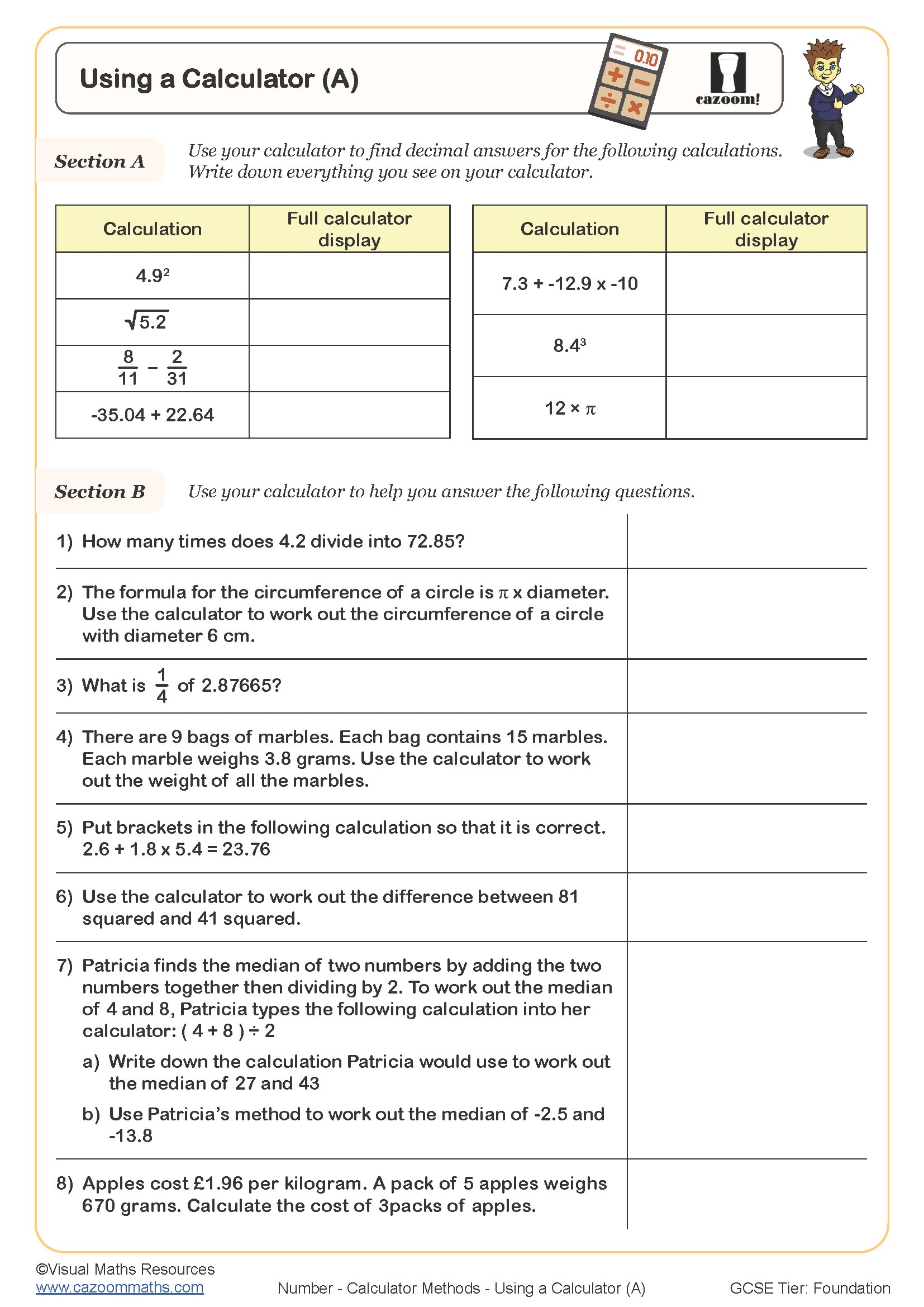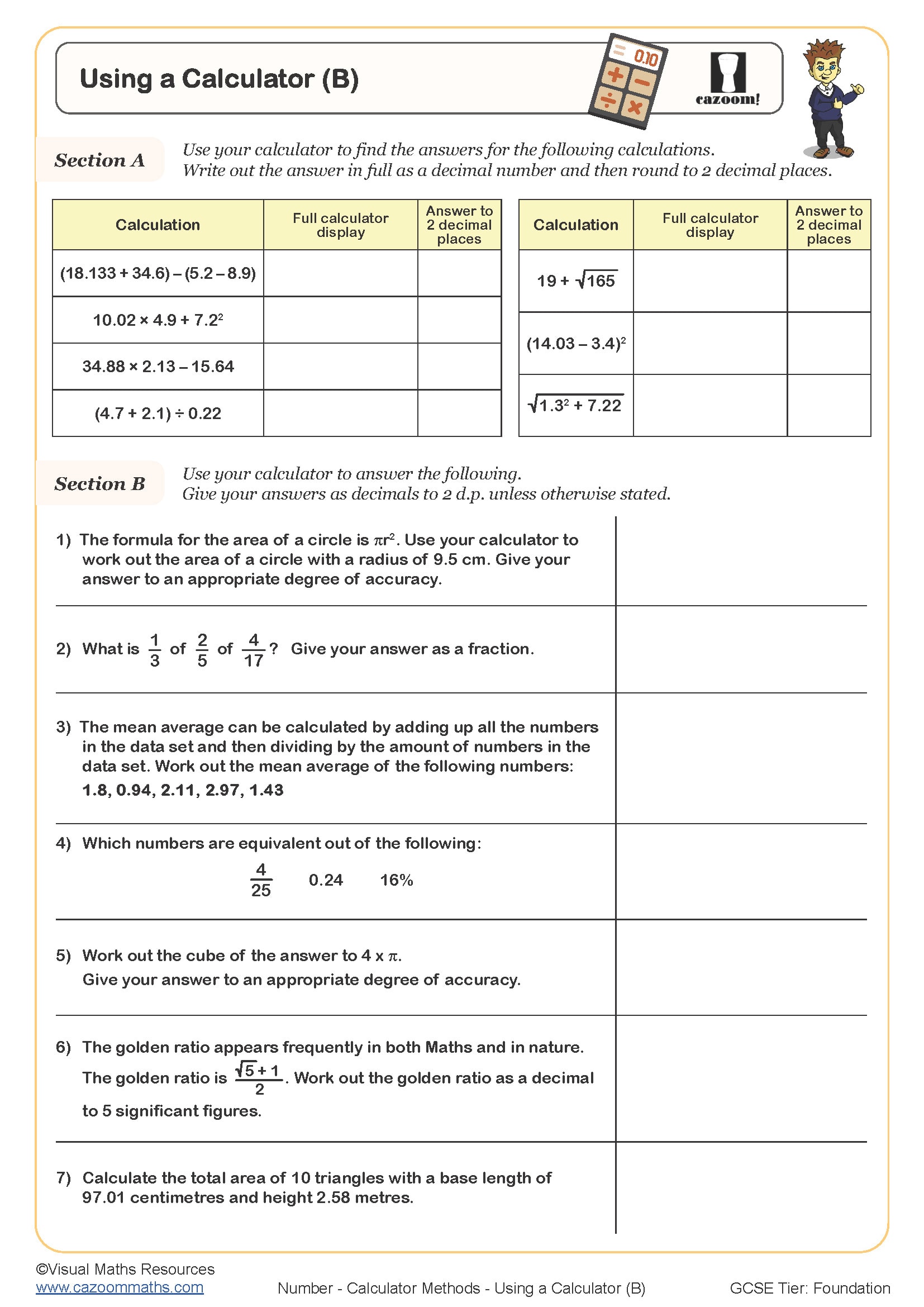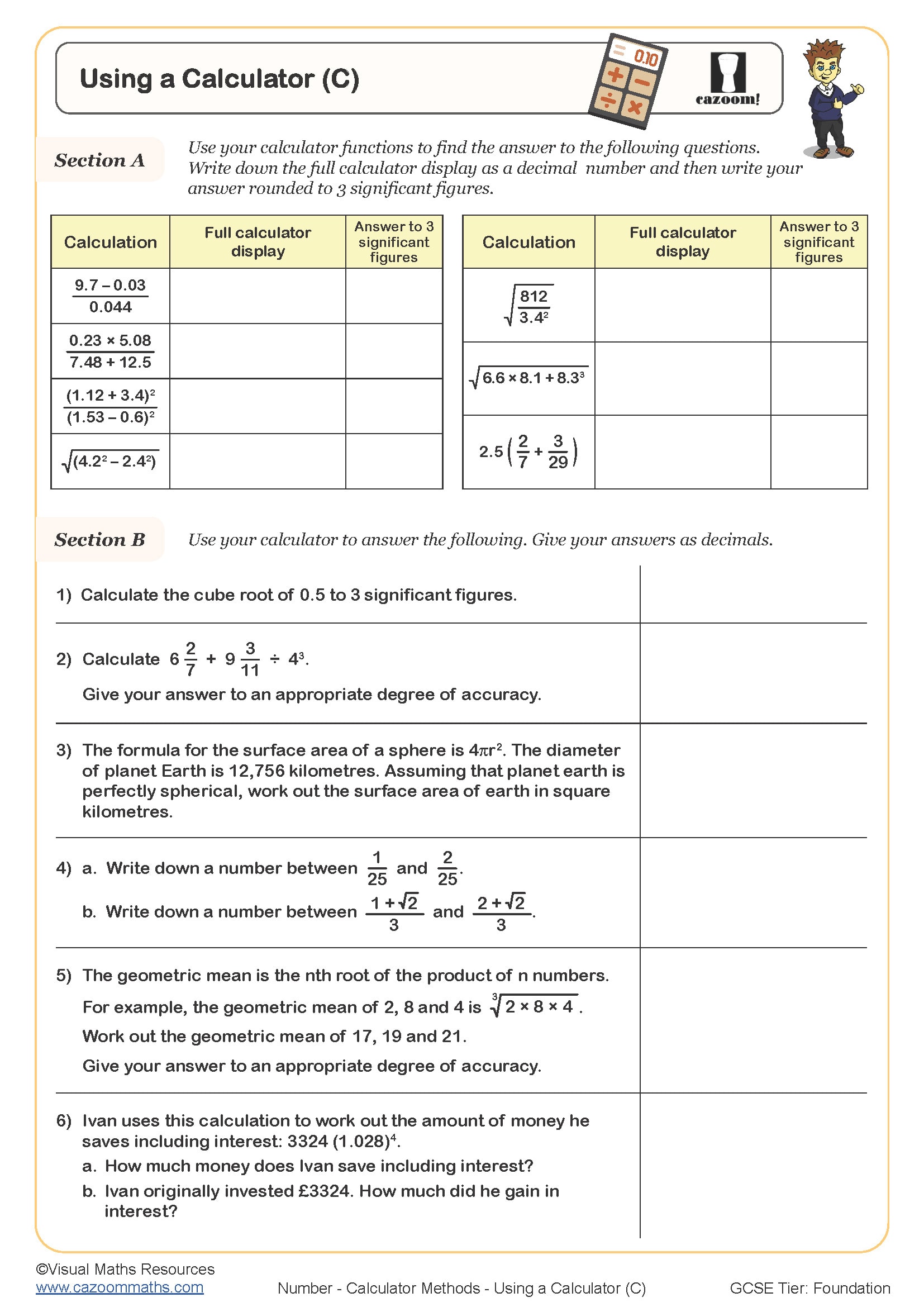Year 8 Calculator Methods Worksheets
How Do These Printable PDF Year 8 Calculator Methods Worksheets Help Students Progress?
The transition from basic mental arithmetic to advanced problem-solving through technological fluency occurs when students learn calculator techniques in Year 8. Students learn to determine when calculator use improves accuracy, but mental methods still offer better efficiency. The balanced teaching method helps students avoid technology dependence while developing the exactness required for trigonometry, statistics and algebraic operations. The structured exercises help students grasp mathematical operations behind calculations instead of focusing on button sequences. The systematic progression allows students to solve progressively complex problems with growing confidence.
Specific learning benefits include:
• Learn order of operations on calculators
• Develops accuracy with decimal calculations
• Strengthens understanding of mathematical notation
• Interprets display results correctly
• Builds competence with complex functions
• Improves checking and estimation skills
• Supports scientific and statistical work
Classroom-Ready Worksheet Topics for Lessons, Homework, and Revision
These worksheets scaffold learning from basic calculator functions to sophisticated operations required across the curriculum. Students begin with fundamental button sequences before progressing to multi-step problems requiring careful input. Each worksheet integrates calculator work with mathematical reasoning, ensuring technology enhances rather than replaces understanding. The progressive structure allows learners to build skills systematically, from simple arithmetic through to complex scientific notation.
The core skills covered include:
• BIDMAS with calculators – entering expressions correctly using brackets
• Powers and roots – calculating squares, cubes and nth roots accurately
• Standard form – inputting and interpreting scientific notation
• Trigonometric functions – finding sin, cos and tan values
• Memory functions – storing and recalling intermediate results
• Fraction calculations – converting between mixed numbers and decimals
• Percentage calculations – finding increases, decreases and reverse percentages
• Statistical functions – calculating means and standard deviations
• Rounding and estimation – checking answers make sense
Why Parents and Teachers Trust Year 8 Calculator Methods Worksheets for Homework Support
The teaching of calculator competence needs intentional instruction from professional educators because students do not naturally understand its effective use. The worksheets aim to correct the widespread belief that students possess natural calculator proficiency. The exercises in this set provide different levels of difficulty to match the diverse abilities found in Year 8 classrooms, starting from fundamental function practice to advanced scientific calculator operations. The answer sheets display complete calculations which demonstrate the exact sequence of button presses. The clear presentation of solutions reduces grading time while enabling teachers to distinguish between students' input mistakes and their conceptual errors. The resources achieve an ideal mix of technical skill development and mathematical precision to prepare students for GCSE calculator exams, where efficiency plays a crucial role.
Why Real-Life Maths Starts With KS3 Calculator Methods Worksheets
Calculator proficiency extends far beyond the classroom, preparing students for careers and situations requiring accurate computation.
• Engineering and design – calculating measurements, angles and material requirements
• Personal finance – working out loan interest and investment returns
• Scientific research – processing experimental data and finding correlations
• Healthcare careers – dosage calculations and statistical analysis
• Architecture projects – scale drawings and area calculations
• Environmental studies – analysing climate data and growth rates
• Business planning – profit margins and break-even analysis
• Technology development – programming numerical algorithms





